Best Twenties Adventure
By:
September 29, 2013
NOTE: This post has been superseded by HILOBROW’s 100 Best Adventures of the Twenties page.
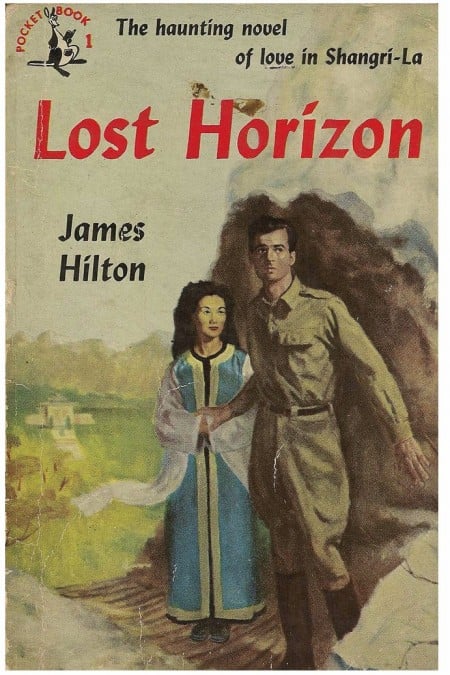
The Best Adventure series of posts will list my favorite 21 adventure novels from each of the 20th Century’s first eight (socio-cultural) decades. Plus, I kicked off the series with a list of the Top 32 adventures from the 19th Century; in total, then, I aim to list 200 of my all-time favorite adventures.
JOSH GLENN’S *BEST ADVENTURES* LISTS: BEST 250 ADVENTURES OF THE 20TH CENTURY | 100 BEST OUGHTS ADVENTURES | 100 BEST RADIUM AGE (PROTO-)SCI-FI ADVENTURES | 100 BEST TEENS ADVENTURES | 100 BEST TWENTIES ADVENTURES | 100 BEST THIRTIES ADVENTURES | 75 BEST GOLDEN AGE SCI-FI ADVENTURES | 100 BEST FORTIES ADVENTURES | 100 BEST FIFTIES ADVENTURES | 100 BEST SIXTIES ADVENTURES | 75 BEST NEW WAVE SCI FI ADVENTURES | 100 BEST SEVENTIES ADVENTURES | 100 BEST EIGHTIES ADVENTURES | 75 BEST DIAMOND AGE SCI-FI ADVENTURES | 100 BEST NINETIES ADVENTURES (in progress) | 1994 | 1995 | 1996 | 1997 | 1998 | 1999 | 2000 | 2001 | 2002 | 2003 | NOTES ON 21st-CENTURY ADVENTURES.
20 ADVENTURE THEMES AND MEMES: Index to All Adventure Lists | Introduction to Adventure Themes & Memes Series | The Robinsonade (theme: DIY) | The Robinsonade (theme: Un-Alienated Work) | The Robinsonade (theme: Cozy Catastrophe) | The Argonautica (theme: All for One, One for All) | The Argonautica (theme: Crackerjacks) | The Argonautica (theme: Argonaut Folly) | The Argonautica (theme: Beautiful Losers) | The Treasure Hunt | The Frontier Epic | The Picaresque | The Avenger Drama (theme: Secret Identity) | The Avenger Drama (theme: Self-Liberation) | The Avenger Drama (theme: Reluctant Bad-Ass) | The Atavistic Epic | The Hide-And-Go-Seek Game (theme: Artful Dodger) | The Hide-And-Go-Seek Game (theme: Conspiracy Theory) | The Hide-And-Go-Seek Game (theme: Apophenia) | The Survival Epic | The Ruritanian Fantasy | The Escapade
This is the fourth post in the series. Here you’ll find a list of my Top 21 Adventures from the Twenties (1924–1933).
ALSO SEE: Radium Age 100: The Best Science Fiction Novels Published from 1904–33
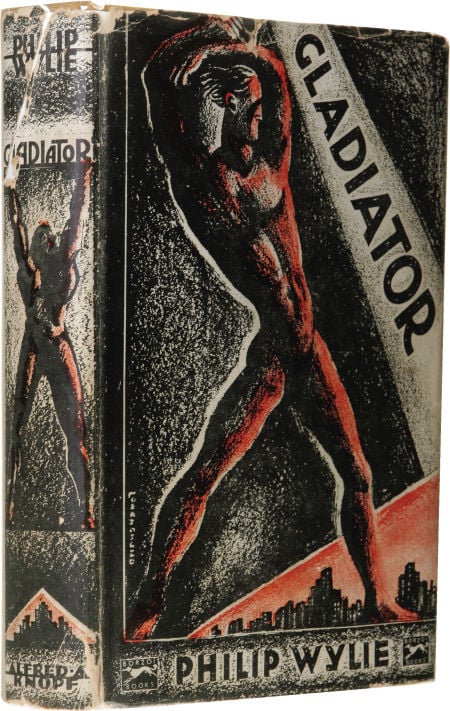
Whereas in my favorite adventure novels of the Nineteen-Teens we find “adolescent” adventure themes and memes engaged in a dialectical high-wire act with postwar Weltschmerz, in the Twenties we discover that the adventure genre has become far more cynical. With very few exceptions after the first years of the era, adventure novels of 1924–1933 are hardboiled. In hardboiled fiction, as one critic puts it, an “anxious sense of fatality is usually attached to a pessimistic conviction that economic and socio-political circumstances will deprive people of control over their lives by destroying their hopes and by creating in them the weaknesses of character that turn them into transgressors or mark them out as victims.” Romantic and sentimental themes and memes are all but verboten.
Not that hardboiled lit isn’t enjoyable to read! I enjoy it a lot. However, I tend to agree with Adorno’s lament (in Minima Moralia’s “Tough Baby” entry) that the hardboiled sensibility is a symptom of a deeply perverse culture — one in which utopian visions of true joy have been cynically replaced with an unhappy version of happiness. By reflexively stamping out sentimentality, which threatens to infiltrate and disintegrate one’s protective carapace, the wised-up hardboiled type becomes ultra-sentimental… because there’s nothing more sentimental than wallowing in gloom. In addition to the wised-up adventures of, e.g., Ernest Hemingway, Dashiell Hammett, Philip Gordon Wylie, John Dos Passos, and William Faulkner, then, I also recommend the romantic potboilers of, e.g., John Buchan, James Hilton, and P.C. Wren.
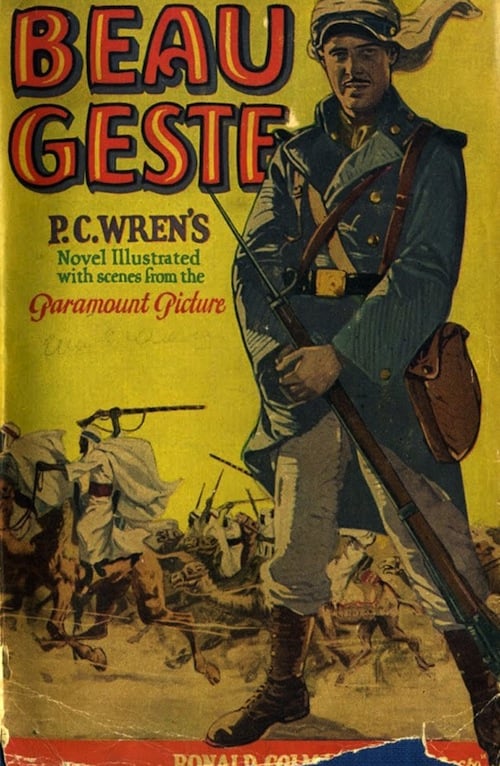
As in each post from this series, I’ve appended a list of 29 second-tier favorites — for a grand total of 50 Top Adventures of the Twenties. Plus a third-tier list that features, among other thing, many obscure adventures. These ought not to be thought of as “third-rate” (I wouldn’t mention them if they weren’t worth reading) but instead as Most Deserving of Rediscovery. Please leave suggestions and feedback.
If you’re interested in reading re-discovered science fiction adventures, check out the 10 titles from HiLoBooks — available online and in gorgeous paperback form.
In chronological order:
- 1924/1919. Johnston McCulley’s historical swashbuckling adventure The Mark of Zorro. The first novella featuring Don Diego de la Vega, a Californio nobleman who, wearing a black mask, defends the people of the land against tyrannical officials. Batman and The Lone Ranger were inspired in part by Zorro, and McCulley’s other pulp inventions were influential too.
- 1924. P.C. Wren’s French Foreign Legion adventure Beau Geste, in which three brothers, each of whom is convinced that he is saving the other two from prison (a precious jewel has gone missing) by doing so — flee Britain and join the Foreign Legion. In French North Africa, a sadistic officer attempts to discover which of them (if any) possesses the jewel; meanwhile, bloodthirsty Tuaregs besiege their little garrison at Fort Zinderneuf.
- 1924. John Buchan’s Richard Hannay adventure The Three Hostages. In his fourth outing, Hannay must rescue the kidnapped children of three prominent people. Also, it seems that a sinister criminal organization is tapping into the psychic disorder caused by the Great War! Hannay’s wife, Mary, and his comrade Sandy Arbuthnot, master of disguise, join him in his quest.
- 1924. Richard Connell’s adventure story “The Most Dangerous Game.” One of the greatest examples of the hunted-man sub-genre. It’s so iconic that I’m breaking the rule against including stories (as opposed to novels) on these lists of mine. Collected in the definitive 1945 collection The Pocket Book of Adventure Stories, ed. Philip Van Doren Stern. (Yes, the same Van Doren Stern who wrote the dark Christmas story adapted as It’s A Wonderful Life.
- 1925. Earl Derr Biggers’s Charlie Chan mystery/detective adventure The House Without a Key. The first in a series of six novels. The character of Charlie Chan was in part designed to counteract the British adventure’s tradition of the sinister, untrustworthy Oriental.
- 1927. Muriel Jaeger’s Radium Age science fiction adventure The Man with Six Senses. When Hilda, a beautiful young member of England’s cynical postwar generation, meets Michael, a hapless mutant capable of perceiving the ever-shifting patterns of electromagnetic fields, she becomes his apostle. (Reissued by HiLoBooks.)
- 1927–28. Dashiell Hammett’s hardboiled crime adventure Red Harvest, featuring an unnamed detective: the “Continental Op.” Hammett based the story on his own experiences in Butte, Montana as an operative of the Pinkerton Detective Agency. Published as a book in 1929.
- 1928. Leslie Charteris’s light-hearted mystery/crime adventure Meet the Tiger. Here, for the first time, we meet the wealthy adventurer Simon Templar (known as The Saint), his manservant ’Orace, and young socialite Patricia Holm. Templar, a thief who steals from thieves, aims to settle an old score with a mysterious individual known as “The Tiger.”
- 1928. W. Somerset Maugham’s espionage adventure story collection Ashenden. Partly based on the author’s WWI experience as a member of British Intelligence in Europe. Again breaking my rule against including stories — as opposed to novels — on these lists.
- 1929. Ernest Hemingway’s hardboiled WWI adventure A Farewell to Arms. “I was always embarrassed by the words sacred, glorious, and sacrifice and the expression in vain… I had seen nothing sacred, and the things that were glorious had no glory and the sacrifices were like the stockyards at Chicago if nothing was done with the meat except to bury it…” The section on the Caporetto retreat is one of the greatest fictional depictions of warfare.
- 1929. Erich Kästner’s YA adventure Emil and the Detectives. En route to Berlin from the provinces, schoolboy Emil Tischbein is robbed of his mother’s salary, which he was bringing to his grandmother. Emil’s cousin, a tomboy named Pony, helps him gather a posse of Berlin street urchins; together they set a trap for the thief.
- 1930. Philip Gordon Wylie’s Radium Age science fiction adventure Gladiator, in which a young man who is nearly invulnerable and can leap trees fights in WWI — as a member of the Foreign Legion. Later, he plans to adopt a secret identity in order to fight crime in New York. A major influence on Siegel and Shuster’s 1938 Superman comic.
- 1930. Arthur Ransome’s YA adventure novel Swallows and Amazons. During holidays in northwestern England, the Walker siblings and tomboys Nancy and Peggy Blackett roam around in sailboats. Their imaginative, grownup-free adventures are influenced by their mutual love of Treasure Island. Which is to say, Ransome was writing meta-fictional adventure.
- 1930. Dashiell Hammett’s hardboiled crime/treasure-hunt adventure The Maltese Falcon. Grittily realistic, morally ambiguous; considered by aficionados to be the standard by which all subsequent American mysteries must be judged. The only novel featuring the character Sam Spade.
- 1931–32. Hergé’s bande dessinée adventure Tintin in America serialized. Sent to Chicago, young reporter-adventurer Tintin and his dog Snowy tackle Al Capone’s mob, pursue another gangster across the country, encounter a tribe of Blackfoot Indians (who get exploited), and also evade a lynch mob and a wildfire! Published as a color album in 1945.
- 1932. Aldous Huxley’s Radium Age science fiction adventure Brave New World. In the year 632 A.F. (After Ford), extra-uterine babies are the norm and conspicuous consumption is the law. Everyone is content… until a Shakespeare-quoting Savage questions whether all this progress is worth it. The one sf novel that everyone knows — and one whose predictions (unlike those of Nineteen Eighty-Four) are uncannily accurate.
- 1932–34. Hergé’s bande dessinée Tintin adventure Cigars of the Pharaoh serialized. In Egypt, Tintin and Snowy discover a tomb crowded with mummified Egyptologists and stashes of opium-filled cigars. They then pursue the Kih-Oskh drug smuggling cartel, whose members wear hoods and robes adorned with a sinister symbol — across the Arabian Peninsula and through India. Published as a color album in 1955.
- 1932. Edwin Balmer and Philip Gordon Wylie’s Radium Age science fiction adventure When Worlds Collide. Scientists rescue a group of men and women, and bear witness to the collapse of civilization, just before the Earth is destroyed.
- 1933. Guy Endore’s horror/historical adventure The Werewolf of Paris. In a city besieged by the Prussian Army, a young man — who might or might not be a werewolf — begins to feed upon the blood of his willing, perverted lover.
- 1933. James Hilton’s adventure Lost Horizon. A kidnapped Englishman who is temperamentally — thanks to his WWI experience — a philosophical ironist (but not a cynic!) discovers, in a remote Tibetan valley, a quasi-monastic community for whom philosophical irony has been elevated to a noble Weltanschauung.
- 1933. James Hilton’s Buchan-esque espionage adventure Knight Without Armour. A British secret agent in Russia rescues the daughter of a Tsarist minister from Bolshevik revolutionaries. Adapted into a fun 1937 movie starring Robert Donat and Marlene Dietrich.
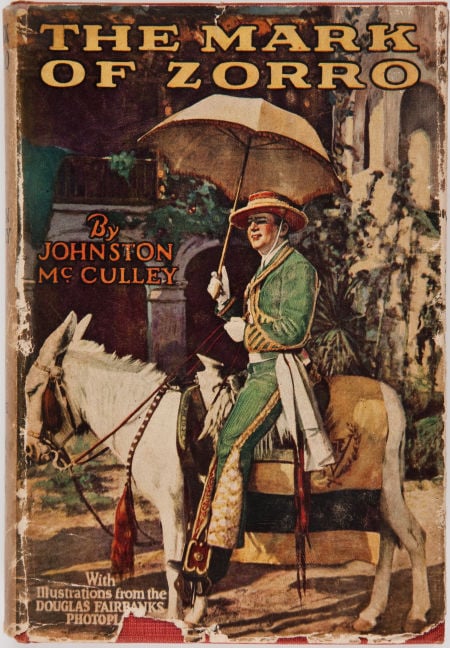
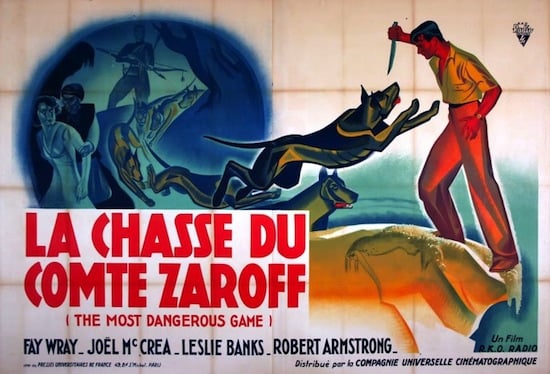
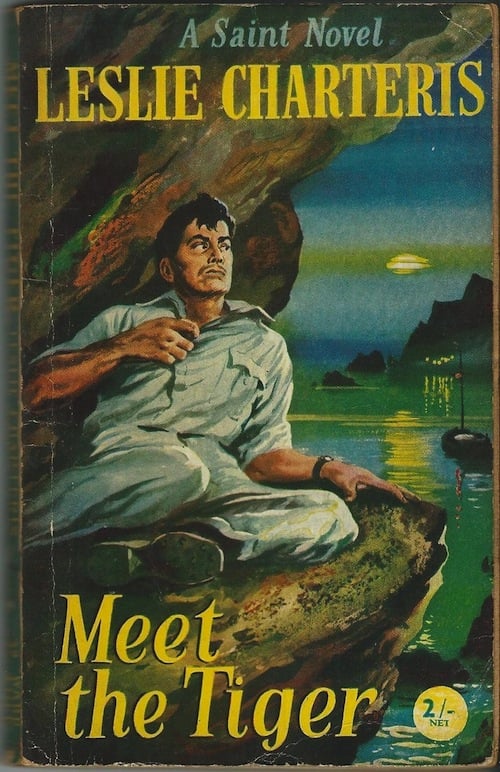
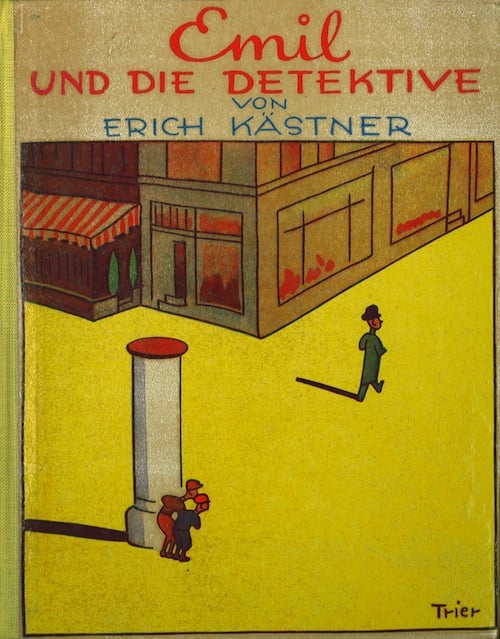

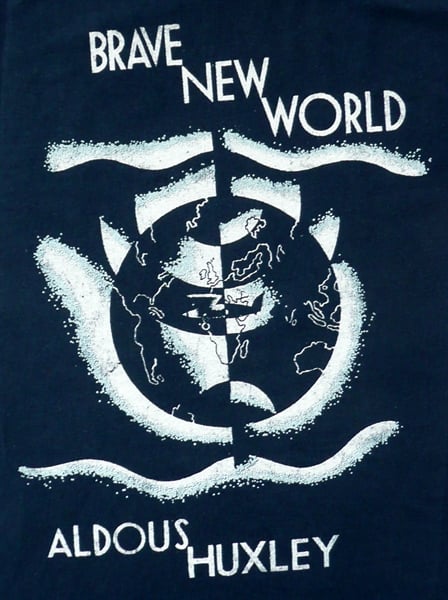
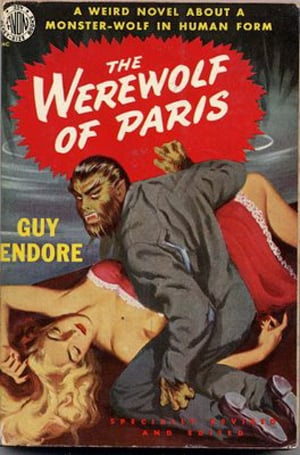
- 1924. A. Merritt’s fantasy adventure The Ship of Ishtar.
- 1924. Gaston Leroux’s Radium Age science fiction adventure Le machine à assassiner. A human-looking mechanical man is animated by a clockwork expert (presciently named Norbert) with the aid of radioactive serum and the brain of guillotined murderer; the cyborg carries off Norbert’s daughter, only to later save her from… a Hindu vampire cult!
- 1924. Edgar Rice Burroughs’s Radium Age science fiction adventure The Land That Time Forgot. Many readers consider this Burroughs’s best novel! A submarine is drawn to an uncharted magnetic island… inhabited by tribes in various states of evolution towards Man.
- 1924. S. Fowler Wright’s Radium Age science fiction adventure The Amphibians.
- 1924. Edgar Rice Burroughs’s Tarzan and the Ant Men. Serialized and also published in book form the same year. NB: This book is mentioned in To Kill A Mockingbird.
- 1925. Blaise Cendrars’s treasure hunt adventure L’Or.
- 1925. J.P. Marquand’s treasure hunt adventure The Black Cargo.
- 1926. E.R. Eddison’s atavistic adventure Styrbiorn the Strong.
- 1927/1935. B. Traven’s treasure-hunt adventure The Treasure of Sierra Madre, in which three Americans hunt for gold in the rugged mountains of Mexico. A sardonic inversion; the author was an anarchist.
- 1927/1941. H.P. Lovecraft’s occult/sf adventure The Case of Charles Dexter Ward, in which a young Rhode Island man becomes obsessed with his wizardly ancestor.
- 1927. H.M. Tomlinson’s sea-going/hunted-man adventure Gallion’s Reach. During a quarrel over labor relations, Jim Colet accidentally kills his boss. He must escape from Rangoon, to Malaya, and back to England.
- 1927. John Buchan’s historical/supernatural adventure Witch Wood. A new minister arrives in a tiny Scottish town, at some point in the 17th Century. Evil lurks there.
- 1928. S. Fowler Wright’s Radium Age science fiction adventure Deluge.
- 1928–29. Edgar Rice Burroughs’s atavistic Tarzan adventure Tarzan and the Lost Empire. Published in book form in 1929. Tarzan and a young German find a lost remnant of the Roman Empire hidden in the mountains of Africa. This novel is notable for the introduction of Nkima, who serves as Tarzan’s monkey companion. A sentimental favorite of mine.
- 1928. Eric P. Kelly’s YA historical adventure The Trumpeter of Krakow.
- 1929. Richard Hughes’s A High Wind in Jamaica. Sardonic inversion.
- 1929. W.R. Burnett’s crime adventure Little Caesar. An unprecedented insider’s look at Chicago gangsters. Made into a 1931 film starring Edward G. Robinson as the gangster Rico.
- 1929. P.G. Wodehouse’s comical Blandings Castle novel Summer Lightning is a spoof of crime adventures.
- 1930. S.J. Perelman’s comical adventure Parlor, Bedlam and Bath. The misadventures of Charles Tattersall.
- 1930. Milt Gross’s satirical Klondike adventure He Done Her Wrong. One of the first graphic novels; or, more precisely: a melodramatic silent movie in cartoon form. Sardonic inversion or ironic homage of the genre?
- 1930. Max Brand’s Western adventure Destry Rides Again. His best-known work, the basis for a movie of the same title. The unjustly convicted Destry returns from jail, plotting revenge.
- 1930. Charles Williams’s fantasy adventure War in Heaven. Williams was one of the Inklings, the Oxford dons whose number included J.R.R. Tolkien and C.S. Lewis. Murder mystery meets Arthurian romance; a predecessor to Susan Cooper’s YA Dark is Rising series.
- 1931. John Taine’s Radium Age science fiction adventure Seeds of Life. An ugly and stupid lab technician is transformed via X-rays into a gorgeous genius. This superman invents wireless energy transfer devices, but does not use them to benefit mankind.
- 1923/1931. A. Merritt’s fantasy/sf adventure The Face in the Abyss.
- 1931. Nathanael West’s The Dream Life of Balso Snell. A surrealistic fantasy. The author’s blurb announced the book’s “use of the violently dissociated, the dehumanized marvelous, the deliberately criminal and imbecilic.”
- 1932. Olaf Stapledon’s Radium Age science fiction adventure Last Men in London.
- 1932. Charles Nordhoff and James Norman Hall’s historical sea-going adventure Mutiny on the Bounty, based on the mutiny against Lieutenant William Bligh in 1789. It was the first of what became The Bounty Trilogy. The writers lived for a number of years in Tahiti, doing research.
- 1933. John Buchan’s espionage adventure A Prince of the Captivity.
- 1933. Hervey Allen’s historical adventure Anthony Adverse is a picaresque whose brooding protagonist travels the world, encountering historical (18th century) figures. His journey includes slave trading in Africa, running a plantation in New Orleans, and his imprisonment in Mexico.
- 1924. Baroness Orczy’s Scarlet Pimpernel adventure Pimpernel and Rosemary.
- 1924. Edgar Wallace’s crime adventure The Dark Eyes of London.
- 1924. Walter White’s The Fire in the Flint is not exactly an adventure but it’s got some adventure elements. White was a light-skinned black man who investigated lynchings for the NAACP by posing as a white reporter.
- 1924. Lord Dunsany’s fantasy adventure The King of Elfland’s Daughter.
- 1925. Frank C. Robertson’s Foreman of the Forty-Bar is the first of scores of Westerns by this popular author.
- 1925. Carl Van Vechten’s Firecrackers. A Realistic Novel. Not really an adventure, but perhaps an ironic homage.
- 1925. Liam O’Flaherty’s hunted-man adventure The Informer.
- 1925. F. Scott Fitzgerald’s The Great Gatsby is not an adventure; but in some respects it apes the conventions of the “avenger”-type (cf. Count of Monte Cristo) adventure.
- 1926. Agatha Christie’s crime adventure The Murder of Roger Ackroyd. For the surprise twist. It’s been called one of the 30 essential crime reads written by women in the last 100 years.
- 1926. Brian Owald Donn-Byrne’s Hangman’s House. NB: Adapted into the first John Wayne/John Ford movie.
- 1926. B. Traven’s sea-going adventure Death Ship, in which an American sailor is trapped on a ship whose owners plan to sink it for the insurance money. The author — an American who lived in Germany and Mexico — was an anarchist. (Hammond Innes would recycle this plot.)
- 1926. Nevil Shute’s adventure Marazan. Philip Stenning is a commercial pilot. He crashes and is rescued by an escaped convict, Denis Compton, who turns out to have been framed for embezzlement by his Italian half-brother, who is smuggling drugs into England. Shute’s first novel.
- 1926. C.S. Forester’s crime adventure Payment Deferred.
- 1926. Dorothy L. Sayers’s Lord Peter Wimsey crime adventure Clouds of Witness.
- 1926. Talbot Mundy’s frontier adventure The Devil’s Guard (also known as Ramsden). Set in Tibet. Part of Mundy’s Jimgrim series.
- 1926. P.C. Wren’s French Foreign Legion adventure Beau Sabreur.
- 1926. Edgar Rice Burroughs’s The Mad King. The first and best of the author’s three great historical novels, a Graustarkian romance in which an American adventurer travels to the mythical European country Lutha.
- 1926. S.S. Van Dine’s crime adventure The Benson Murder Case, which marks the debut of Dine’s dilettantish master sleuth, Philo Vance.
- 1926. G.K. Chesterton’s crime adventure story collection The Incredulity of Father Brown, the third of five Father Brown collections.
- 1927. Baroness Orczy’s Scarlet Pimpernel adventure Sir Percy Hits Back.
- 1927. Franklin W. Dixon’s (Edward Stratemeyer) YA mystery adventure The Tower Treasure should be mentioned here — the first Hardy Boys book.
- 1927. Leslie Barringer’s Neustrian Cycle fantasy adventure, Gerfalcon.
- 1927. Arthur Conan Doyle’s The Case-Book of Sherlock Holmes, the final set of Sherlock Holmes stories.
- 1927. Edgar Rice Burroughs’s Radium Age science fiction Barsoom adventure The Master Mind of Mars. Published in book form in 1928.
- 1927. Ernest Hemingway’s short story “Fifty Grand” — collected in the definitive 1945 collection The Pocket Book of Adventure Stories, ed. Philip Van Doren Stern.
- 1927. Upton Sinclair’s Oil! is an adventure of sorts. Regarded by some as the author’s best novel, it’s the story of independent oil operators struggling against monopoly interests.
- 1927. G.K. Chesterton’s crime adventure story collection The Secret of Father Brown, the fourth of five Father Brown collections.
- 1927. Dorothy L. Sayers’s Lord Peter Wimsey crime adventure Unnatural Death.
- 1927–28. Edgar Rice Burroughs’s atavistic Tarzan adventure Tarzan, Lord of the Jungle. Published in book form in 1928.
- 1928. E.E. “Doc” Smith’s Skylark sf adventure The Skylark of Space. Published in book form in 1946. Written with Mrs. Lee Hawkins Garby, 1915–20.
- 1928. Nevil Shute’s espionage adventure So Disdained.
- 1928. Dorothy L. Sayers’s Lord Peter Wimsey crime adventure The Unpleasantness at the Bellona Club.
- 1928. Alexander Wilson’s espionage adventure The Mystery of Tunnel 51. Wilson’s novel is said to convey an uncanny portrait of the first head of the Secret Intelligence Service, Mansfield Smith-Cumming, the original “C.”
- 1928. Georgette Heyer’s historical romance adventure The Masqueraders.
- 1928. Leslie Barringer’s Neustrian Cycle fantasy adventure, Joris of the Rock.
- 1928. Patricia Wentworth’s Miss Silver crime adventure, Grey Mask. It’s been called one of the 30 essential crime reads written by women in the last 100 years.
- 1929. Richard Aldington’s WWI adventure Death of a Hero.
- 1929. Dashiell Hammett’s hardboiled crime adventure The Dain Curse. Another case of the unnamed detective “Continental Op.”
- 1929. Floyd Gibbons’s Radium Age science fiction adventure The Red Napoleon, which predicts a Soviet conquest of Europe and invasion of America. Shades of Red Dawn!
- 1929. Erich Maria Remarque’s All Quiet on the Western Front. Rates a mention here, though it is a sardonic inversion of the adventure genre.
- 1929. C.S. Forester’s sea-going/military adventure Brown on Resolution.
- 1929. John Buchan’s adventure The Courts of the Morning, in which his character Richard Hannay makes a cameo appearance.
- 1929. Baroness Orczy’s Scarlet Pimpernel adventure Adventures of the Scarlet Pimpernel.
- 1929. Graham Greene’s crime adventure The Man Within. The author later repudiated it as “hopelessly romantic.”
- 1929. Anthony Berkeley’s crime adventure The Poisoned Chocolates Case.
- 1929. Ellery Queen’s (Frederick Dannay and Mafred B. Lee)’s mystery adventure The Roman Hat Mystery is the first Ellery Queen mystery.
- 1929. Arthur Conan Doyle’s Radium Age science fiction adventure The Maracot Deep.
- 1929. John Steinbeck’s historical pirate adventure Cup of Gold: A life of Sir Henry Morgan, Buccaneer, with Occasional Reference to History. Debut novel for Steinbeck.
- 1929. Edgar Rice Burroughs’s atavistic/Radium Age science fiction Tarzan adventure Tarzan at the Earth’s Core. Published in book form in 1930.
- 1929. S. Fowler Wright’s Radium Age science fiction adventure The World Below. Sequel to The Amphibians.
- 1929. Gladys Mitchell’s Beatrice Adela Lestrange Bradley crime adventure Speedy Death. It’s been called one of the 30 essential crime reads written by women in the last 100 years.
- 1929–30. Hergé’s bande dessinée adventure Tintin in the Land of the Soviets serialized. Published in album form in 1930.
- 1930. Leslie Charteris’s Simon Templar adventure story collection Enter the Saint.
- 1930–31. Hergé’s bande dessinée adventure Tintin in the Congo serialized. Published as a color album in 1946. My father read it to me and used to teach me a lesson about racism… without suggesting that the book was therefore not a good adventure.
- 1930. Edgar Rice Burroughs’s Radium Age science fiction Barsoom adventure A Fighting Man of Mars. Published in book form in 1931.
- 1930. Olaf Stapledon’s Radium Age science fiction yarn The Last and First Men. Not really an adventure — but an amazing book.
- 1930. Leslie Charteris’s Simon Templar adventure novel The Last Hero. Templar foils a wealthy financier who is planning to use a revolutionary scientific discovery in order to commit crimes. Likely an influence on the James Bond novels.
- 1930. Kenneth Roberts’s historical adventure Arundel. The first in a series of bestsellers set in southern Maine during the Revolutionary War.
- 1930. Elmer Rice’s satirical Radium Age science fiction adventure, The Voyage to Purilia. A planet where inhabitants conform to a narrow range of emotional types, to the sounds of a continual sweet soundtrack and under the direction of an all-powerful narrator. Based on the author’s experiences in Hollywood.
- 1930. Hugh Walpole’s historical adventure Rogue Herries, set in mid-18th c. Cumberland. First in the Herries series. Very popular at the time.
- 1930. Leslie Charteris’s Simon Templar adventure novel Knight Templar.
- 1930. E.E. “Doc” Smith’s Skylark sf adventure Skylark Three. Published in book form in 1948.
- 1930. Dorothy L. Sayers’s Lord Peter Wimsey crime adventure Strong Poison. Introducing detective novelist Harriet Vane!
- 1930. Rafael Sabatini’s short story “The King’s Messenger” — collected in the definitive 1945 collection The Pocket Book of Adventure Stories, ed. Philip Van Doren Stern.
- 1930. Carolyn Keene’s (various contract authors of the Stratemeyer Syndicate) YA mystery adventure The Secret of the Old Clock, the first Nancy Drew story. Nancy Drew transforms the accepted image of passive femininity into that of an active problem solver.
- 1930–31. Edgar Rice Burroughs’s atavistic Tarzan adventure Tarzan the Invincible. Published in book form in 1931.
- 1931. Dorothy L. Sayers’s Lord Peter Wimsey crime adventure Five Red Herrings.
- 1931. Leslie Charteris’s Simon Templar adventure story collection Featuring the Saint.
- 1931. William Faulkner’s potboiler Sanctuary. The story of Temple Drake’s rape and torture by the sadistic psychopath Popeye was written to make money; it was a bestseller.
- 1931. Arthur Ransome’s YA Swallows and Amazons adventure Swallowdale.
- 1931. Leslie Charteris’s Simon Templar adventure story collection Alias the Saint.
- 1931. Leslie Charteris’s Simon Templar adventure novel She Was a Lady.
- 1931. Dashiell Hammett’s crime adventure The Glass Key.
- 1931. Thorne Smith’s comical fantasy adventure Turnabout, in which a a man and a woman switch bodies.
- 1931. Leslie Charteris’s Simon Templar adventure story collection The Holy Terror.
- 1931. George S. Schuyler’s satirical Radium Age science fiction adventure Black No More, in which a cream is discovered that allows blacks to become white.
- 1931. Arna Bontemps’s God Sends Sunday, about a black jockey whose luck deserts him.
- 1931. Thorne Smith’s comical fantasy adventure The Night Life of the Gods.
- 1931. Francis Iles’s crime adventure Malice Aforethought.
- 1931. Kenneth Roberts’s historical adventure The Lively Lady. The second in a series of bestsellers set in southern Maine during the Revolutionary War.
- 1931–32. Edgar Rice Burroughs’s atavistic Tarzan adventure Tarzan Triumphant. Published in book form in 1932.
- 1932. Arthur Ransome’s YA Swallows and Amazons adventure Peter Duck.
- 1932. Dorothy L. Sayers’s Lord Peter Wimsey crime adventure Have His Carcase. Featuring Harriet Vane!
- 1932. Rafael Sabatini’s swashbuckling adventure The Black Swan. The least well known of the author’s three pirate novels. Notable for showing — long before Marcus Rediker’s historical study Villains of All Nations — just how democratic pirate crews were.
- 1932. A. Merritt’s fantasy adventure Dwellers in the Mirage. A lost land is concealed in a remote Alaskan valley by a mirage.
- 1932. Rudolph Fisher’s mystery adventure The Conjure-Man Dies is the first American mystery novel entirely populated by black characters.
- 1932. Nevil Shute’s crime adventure Lonely Road.
- 1932. Philip Wylie’s The Savage Gentleman. A major influence on the pup fiction adventurer Doc Savage.
- 1932. Edgar Wallace’s atavistic/exploration adventure King Kong. He died while writing the screenplay for the 1933 movie.
- 1932. John Buchan’s Radium Age science fiction adventure The Gap in the Curtain.
- 1932. Dashiell Hammett’s light-hearted mystery adventure The Thin Man. The author’s last novel.
- 1932. Leslie Charteris’s Simon Templar adventure novel Getaway.
- 1932. Baroness Orczy’s Scarlet Pimpernel adventure A Child of the Revolution.
- 1932. Graham Greene’s adventure Stamboul Train (Orient Express).
- 1932. C.S. Forester’s historical adventure Rifleman Dodd (also published as Death to the French).
- 1932–51. Clark Ashton Smith’s outré Radium Age science fiction/fantasy adventure Zothique. Sixteen stories and a poem, published over 19 years — recounting tales of Earth’s far future, when magic has replaced science.
- 1933–35. Edgar Rice Burroughs’s atavistic/comical Tarzan adventure Tarzan and the Lion Man. At one point, Tarzan visits Hollywood to find himself in a screen test for a role in a Tarzan movie; he is deemed unsuitable for the lead role. Published in book form in 1934.
- 1933. Leslie Charteris’s Simon Templar adventure story collection Once More the Saint.
- 1933. C.S. Forester’s historical adventure The Gun. Similar plot, in some ways, to his later novel, The African Queen. During Napoleon’s war with Spain, the protagonists must transport a cannon across impossible territory.
- 1933. William March’s WWI adventure Company K reflects the author’s combat experiences. Granville Hicks claimed it was one of the three or four “first-rate American novels about the World War.”
- 1933. Arthur Ransome’s YA Swallows and Amazons adventure Winter Holiday.
- 1933. Dorothy L. Sayers’s Lord Peter Wimsey crime adventure Murder Must Advertise.
- 1933. Baroness Orczy’s Scarlet Pimpernel adventure The Way of the Scarlet Pimpernel .
- 1933. Kenneth Roberts’s historical adventure Rabble in Arms. The third in a series of bestsellers set in southern Maine during the Revolutionary War.
- 1933. Raymond Chandler’s first detective adventure: “Blackmailers Don’t Shoot” published in Black Mask.
- 1933. Lester Dent’s Doc Savage adventures The Man of Bronze, The Land of Terror, Quest of the Spider, The Polar Treasure, Pirate of the Pacific, The Red Skull, The Lost Oasis, The Sargasso Ogre, The Czar of Fear, and The Phantom City.
- 1933. Leslie Charteris’s Simon Templar adventure story collection The Brighter Buccaneer.
- 1933. Erle Stanley Gardner’s detective adventure The Case of the Velvet Claws is the first Perry Mason story.
- 1933–40. C.L. Moore’s Northwest Smith science fiction/fantasy adventures, beginning in 1933 with “Shambleau.” Northwest Smith, sometimes accompanied by a Venusian adventurer, roams the solar system and undergoes strange psychological/spiritual trials.
BEST ADVENTURE LIT: Best 19th Century Adventure (1805–1903) | Best Nineteen-Oughts Adventure (1904–1913) | Best Nineteen-Teens Adventure (1914–1923) | Best Twenties Adventure (1924–1933) | Best Thirties Adventure (1934–1943) | Best Forties Adventure (1944–1953) | Best Fifties Adventure (1954–1963) | Best Sixties Adventure (1964–1973) | Best Seventies Adventure (1974–1983). I’ve only recently started making notes towards a list of Best Adventures of the Eighties, Nineties, and Twenty-Oughts.
ADVENTURERS as HILO HEROES: Katia Krafft | Freya Stark | Louise Arner Boyd | Mary Kingsley | Bruce Chatwin | Hester Lucy Stanhope | Annie Smith Peck | Richard Francis Burton | Isabella Lucy Bird | Calamity Jane | Ernest Shackleton | Osa Helen Johnson | Redmond O’Hanlon | Gertrude Bell | George Mallory | Neta Snook | Jane Digby | Patty Wagstaff | Wilfred Thesiger | Joe Carstairs | Florence “Pancho” Barnes | Erskine Childers | Jacques-Yves Cousteau | Michael Collins | Thor Heyerdahl | Jean-Paul Clébert | Tristan Jones | Neil Armstrong
MORE FURSHLUGGINER THEORIES BY JOSH GLENN: TAKING THE MICKEY (series) | KLAATU YOU (series intro) | We Are Iron Man! | And We Lived Beneath the Waves | Is It A Chamber Pot? | I’d Like to Force the World to Sing | The Argonaut Folly | The Perfect Flâneur | The Twentieth Day of January | The Dark Side of Scrabble | The YHWH Virus | Boston (Stalker) Rock | The Sweetest Hangover | The Vibe of Dr. Strange | CONVOY YOUR ENTHUSIASM (series intro) | Tyger! Tyger! | Star Wars Semiotics | The Original Stooge | Fake Authenticity | Camp, Kitsch & Cheese | Stallone vs. Eros | The UNCLE Hypothesis | Icon Game | Meet the Semionauts | The Abductive Method | Semionauts at Work | Origin of the Pogo | The Black Iron Prison | Blue Krishma! | Big Mal Lives! | Schmoozitsu | You Down with VCP? | Calvin Peeing Meme | Daniel Clowes: Against Groovy | The Zine Revolution (series) | Best Adventure Novels (series) | Debating in a Vacuum (notes on the Kirk-Spock-McCoy triad) | Pluperfect PDA (series) | Double Exposure (series) | Fitting Shoes (series) | Cthulhuwatch (series) | Shocking Blocking (series) | Quatschwatch (series)
READ MORE essays by Joshua Glenn, originally published in: THE BAFFLER | BOSTON GLOBE IDEAS | BRAINIAC | CABINET | FEED | HERMENAUT | HILOBROW | HILOBROW: GENERATIONS | HILOBROW: RADIUM AGE SCIENCE FICTION | HILOBROW: SHOCKING BLOCKING | THE IDLER | IO9 | N+1 | NEW YORK TIMES BOOK REVIEW | SEMIONAUT | SLATE
